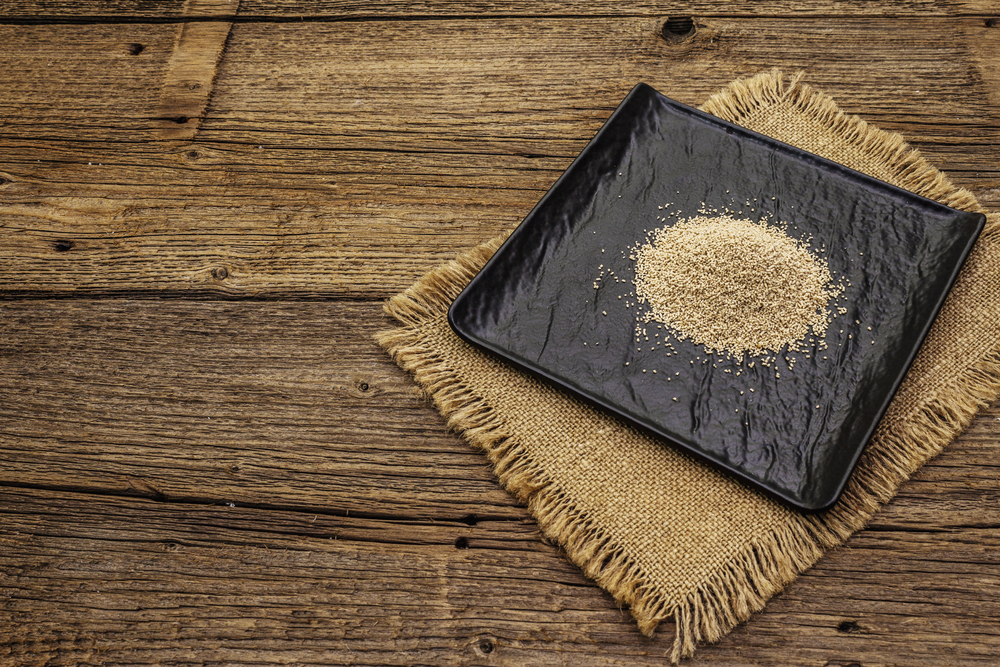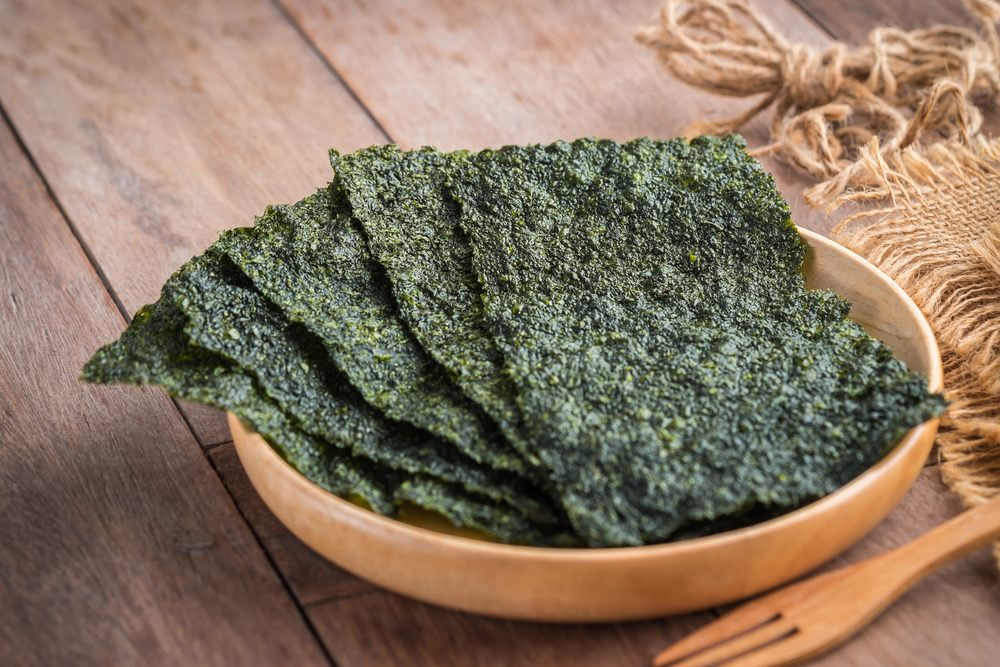You probably know kombu as that delicious seaweed commonly used to prepare Japanese soups and other dishes.
Well, we have good news for you! You don’t need to visit Japan to get your hands on some of the most delicious seaweed you will ever taste.
Kombu is readily available in grocery stores all over the world, so you will never have to miss out on this healthy food again.
If you want to incorporate more kombu into your diet but are worried about running out, read on to learn about some of the most convenient kombu substitutes like Ajinomoto, bonito soup stock, and wakame seaweed, that will have you reaching for them time and time again.
Is Kombu Just Dried Seaweed?
Kombu is a popular seaweed in Japanese cuisine. Kombu refers to one of the many Japanese seaweeds and in this case a type of kelp.
Kombu is dried for a long time, compared to other types of seaweed. After it’s dried, kombu ages for 1-3 years before it ships out for consumption. High-quality kombu can age for 5-10 years.
What is Kombu Used For?
Kombu is known most for the production of Japan’s famous Dashi broth. This broth is used as the base in many Japanese dishes to provide that desired umami flavor.
While it’s known best for its use in making Dashi, kombu is used as a tea, in baking, and in the creation of various soups such as miso and tofu soup, and as an ingredient in many other dishes.
Kombu is favored for its strong umami flavor adding depth to whatever it’s used in.
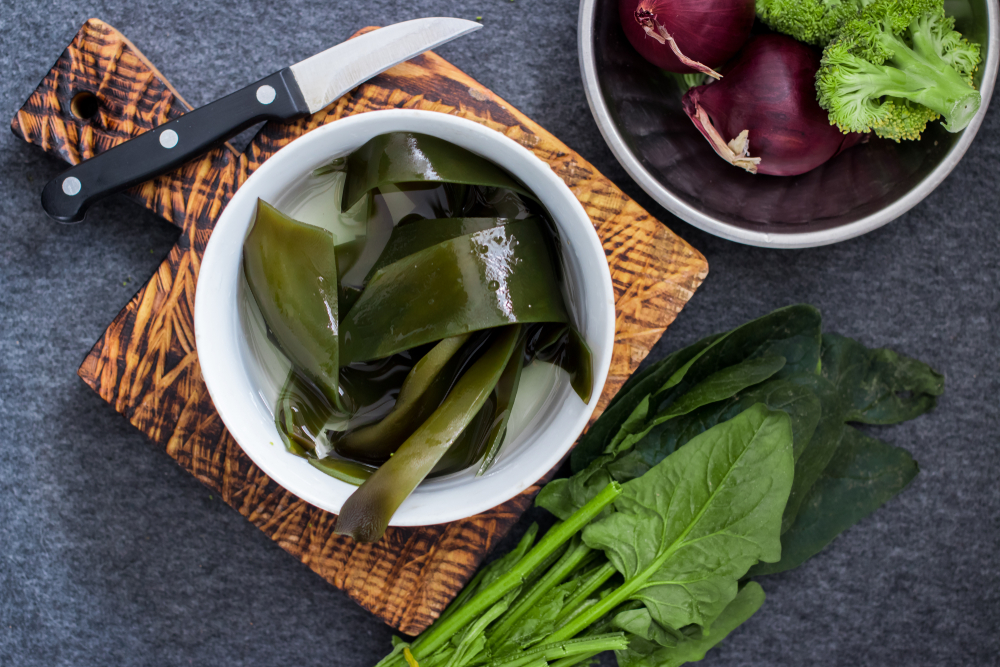
What Can Be Substituted for Kombu?
1. Kombu Tea
As a tea, Kombu tea is a dried and chopped form of your dried Kombu seaweed. You can use the tea to make a beverage or stock in a pinch.
The thing with kombu tea is they might add other flavors, the most popular being plum. If you’re planning on making the more savory Dashi or other savory dishes, make sure to only use pure Kombu tea.
2. Dried Kombu Granules
Kombu can be hard to find and comes at a steep price. The easiest way to substitute kombu is to find other ingredients that contain kombu.
The brand name Hondashi sells kombu granules mixed with other dried ingredients like bonito shavings, sardines, and shitake mushrooms.
This mixture is a great kombu substitute when you’re making stews, mixed rice, and even your own Dashi.
These granules are usually easier to find in the store, but they don’t add any spice or salt, so taste your dish and make sure the flavor is to your liking.
3. Ajinomoto
One of the most popular brands on the market, Ajinomoto, is designed as a flavor enhancer for any classic Japanese recipe.
As a Kombu substitute, Ajinomoto is a salt of monosodium glutamate that adds all those umami flavors that you’re looking for with Kombu.

Not having any flavor on its own, you’ll want to adjust the rest of your ingredients to reach the appropriate flavor balance.
4. Mentsuyu
Mentsuyu is made using Dashi, soy sauce, salt, and sugar with a few other things thrown in. Being that some have Kombu in it, it’s an excellent kombu substitute in some dishes.
If you can’t find Kombu, but have access to the famous Japanese spice, Mentsuyu, you have Dashi right in your hands.
Even if the bottle you can buy is bonito based, mentsuyu will add that umami flavor you’re craving.
This strongly flavored spice is salty and savory and should be used sparingly.
5. Hondashi
Hondashi is a brand name rather than an exact ingredient. These dashi granules are famous in Japan and an excellent kombu substitute.
Being made from dried dashi, Hondashi can be used in all kinds of recipes from miso soup to pot dishes, or even mixed in rice.
Hondashi’s granules come in various types made from dried bonito, kombu, dried sardines, and so on.
Your best bet would be to use the variety made from kombu, but the other varieties would work too.
6. Bonito Soup Stock
Bonito is a less known option that’s also frequently added to kombu granules.

This soup stock is made from dried fish flakes and is a common base for Japanese soups.
Bonito soup stock is simple to make, by boiling the dried fish in water. You’ll want to drain the stock before you use it and add some salt to your liking.
7. Dried Shiitake Mushroom Soup Stock
For a kombu replacement, dried shiitake mushroom stock is a little involved.
You’ll want high quality mushrooms for this stock. You need to soak your mushrooms in water in the fridge for 6 to 12 hours. Measure out 100ml of water for each mushroom you use.
If you’re in a hurry, you can boil the dried shiitakes, but this process won’t have as much flavor. Try adding basil, parsley, and oregano to the stock to take it up a notch.
Shiitake mushrooms contain the same glutamic acid as Kombu so this stock makes an excellent Kombu substitute.
8. Wakame Seaweed
Kombu at its base is a seaweed. As such, there’s always other seaweed alternatives.
One of the more popular kombu alternatives is Wakame seaweed which is a popular substitute for flavor in vegetarian recipes.
Soaking wakame seaweed however, doesn’t release those umami flavors so it’s not the best kombu substitute if you’re making dashi.
It’s not just for soups either, wakame can replace kombu in salads too.
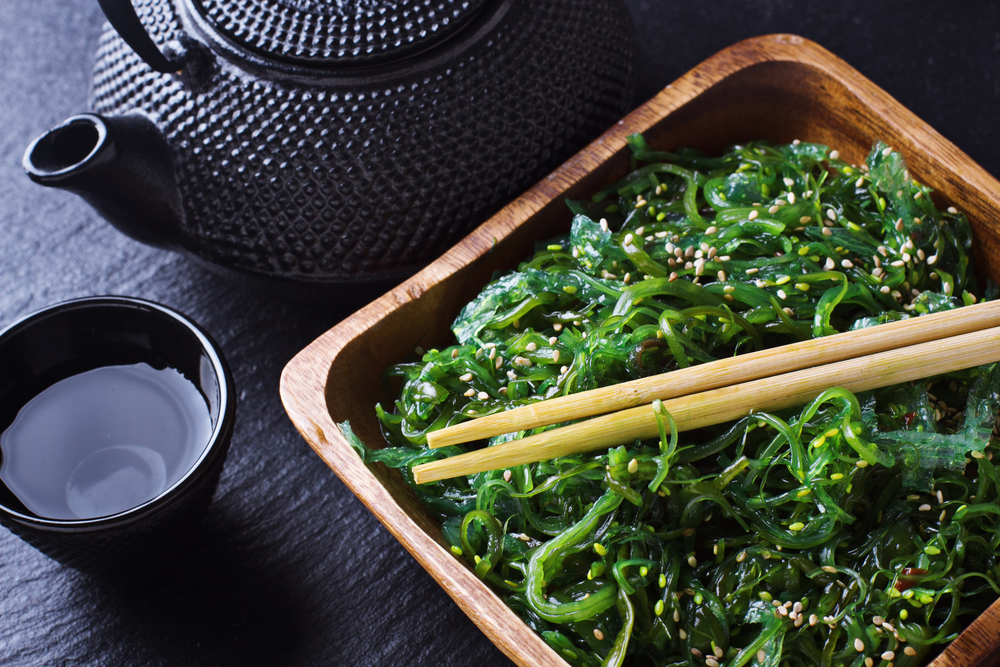
9. Chicken Stock
Since Dashi is usually what comes to mind when talking about Kombu, chicken stock is one of the first kombu substitutes suggested.
Buy some ready made chicken stock or make your own using chicken meats and veggies. There are other dried and concentrated options as well.
If you want that extra umami flavor, throw in some mushrooms for their natural glutamic acid and earthy flavors similar to kombu.
10. Dried Tomato
An unexpected addition to this list, dried tomato can serve as an excellent kombu substitute in some meals.
Just as easy to make as bonito or dried shiitake stock, dried tomato is made through simmering or soaking in a jar overnight. You’ll want to strain out the water when you’re finished.
The reason tomatoes work is because they have the same acids as Kombu. The biggest difference between the two is the color, so you won’t want to use it in clear broth recipes.
11. Soy Sauce
If the kombu is designed to add that umami flavor, the easiest substitute and most readily available is soy sauce.
Keep in mind that soy sauce is salty and should be used in small amounts and due to its dark color isn’t suitable for clear broth recipes.
12. Beef Broth
Much like chicken broth, beef broth is a sensible option in miso soups and other darker broths.

Beef stock takes much longer to make from scratch, but there are ready made, dried powder or cubes, and concentrates available for a quick kombu substitute.
Much like with the chicken broth, if you want that true umami depth of flavor, add some mushrooms and spices to your beef stock.
13. White Fish
A replacement for bonito and kombu, any white fish stock can be easily altered to replace kombu in many soup recipes.
This light stock is a good base for you to fine tune with spices and veggies like mushrooms to make it more flavorful.
It’s clear color makes it ideal for mixing into other foods like rice and tofu.
14. Hijiki Seaweed
This common Korean seaweed has a similarly intense flavor to kombu. Hijiki seaweed’s flavor has been described as more of an earthy mushroom flavor rather than kelp.
With the same savory, umami flavors compared to kombu, hijiki is a good replacement in recipes that are more complex in flavors to hide the subtle differences in flavor.
Hijiki seaweed is grown in a less salty environment, making it a great kombu alternative in recipes that also have other salty ingredients.
15. Nori Algae
Another Korean cuisine addition, nori algae or seaweed laver is a combination of many different kinds of seaweed flavors.
This combo is used for its savory and salty flavors and distinct crispy texture to a variety of Korean dishes. These dishes are quite similar to those in Japan that add kombu instead.
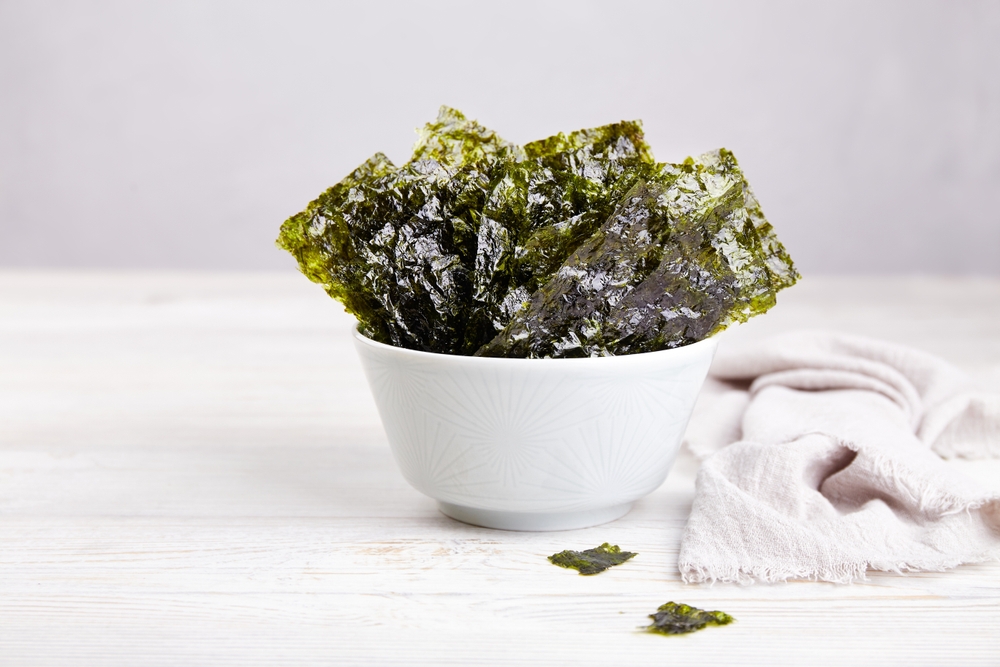
Nori algae can be used as a kombu substitute with almost no loss in textural or flavor profiles.
FAQs
What does kombu do in broth?
Kombu is used as a flavor enhancer. Its natural quantities of glutamic acid add the umami flavor profiles that are prized in Japanese cuisine.
Why shouldn’t you boil kombu?
You can. Kombu is boiled in Korean cuisine all the time. The reasoning behind not boiling kombu is a claim that it will make your broth bitter and of a slimy texture. Certain cuisines consider boiled kombu broth to be of a lesser quality.
Does kombu taste fishy?
No, kombu is not fishy at all. Due to its high umami flavor it can and is often substituted with a fish based broth, but kombu has a briny and mushroom-like flavor.
To End
When it comes to Kombu, you have a lot of options, but they all depend on how you plan to use the seaweed.
You can either buy Kombu and make your own Dashi, or you can find other ingredients that contain kombu and make your own broth.
You can also use dried Kombu in recipes such as miso soup or stuffed cabbage rolls.
The best way to determine which kombu is best for you is to taste it. If you aren’t easily able to find kombu, you can try something like Wakame instead.
If you have access to bonito, you can also try using them instead of Kombu. Make sure to adjust the seasonings accordingly.
And to finish off, you can also try using Ajinomoto in place of Dashi for that umami flavor profile.
When it comes to Kombu, there are so many options that you might feel overwhelmed by it all. The good news is that you don’t need to be. You can use one of these kombu substitutes to add lots of flavor to your meals without sacrificing any of the benefits that Kombu can offer.




